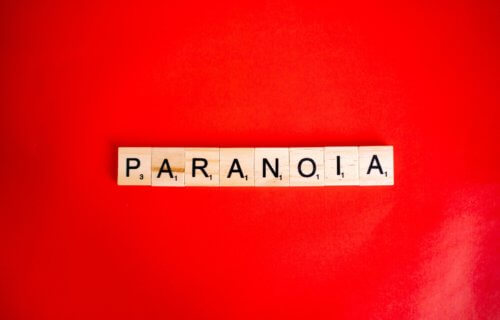NEW HAVEN, Conn. — Uncertainty can be an unnerving part of life, and that’s before you add in a global pandemic filled with plenty of unexpected moments. Researchers at Yale University say paranoia may become a serious issue for people, as a result of more and more abrupt changes in their lives.
Researchers theorize paranoia comes from a person’s inability to properly gauge social threats they face. Study authors Phillip Corlett and Erin Reed believe paranoia is more based around basic learning procedures triggered by unexpected uncertainty. Even with the absence of social threats, the team says the triggers for paranoia still thrive.
“When our world changes unexpectedly, we want to blame that volatility on somebody, to make sense of it, and perhaps neutralize it,” Corlett explains in a university release. “Historically in times of upheaval, such as the great fire of ancient Rome in 64 C.E. or the 9/11 terrorist attacks, paranoia and conspiratorial thinking increased.”
Paranoia, mind games can lead to mental illness
Study authors performed several experiments on subjects who displayed varying degrees of paranoia. The team asked participants to play a card game where the best chances of success were secretly changed. Those with hardly any paranoia weren’t quick to assume the best choice had changed during the game. Individuals with higher levels of paranoia acted more irregular with their choices. Even after a win, they changed their prediction.
Halfway through the game, researchers changed the chances of winning to a higher level of uncertainty without telling the participants. In turn, both low and high-level paranoid individuals played in an irregular manner.
The study finds people with more paranoia believe that others have ill intent toward them and others, making it a key factor in mental illness. One previous survey discovered 20 percent of the population believed people were working against them at some point over the last year. Eight percent believed that others actively wanted to cause them harm.
Jane Taylor and Stephanie Groman, both Yale collaborators, conducted a related experiment as well. Instead of humans, their tests utilize rats to examine paranoid behavior. Rats who received methamphetamine, a stimulant that affects the nervous system, mirrored humans in their symptoms of paranoia. Reed and Corlett confirmed the other researcher’s findings.
“The benefit of seeing paranoia through a non-social lens is that we can study these mechanisms in simpler systems, without needing to recapitulate the richness of human social interaction,” Reed says.
The study is published in the journal eLife.
